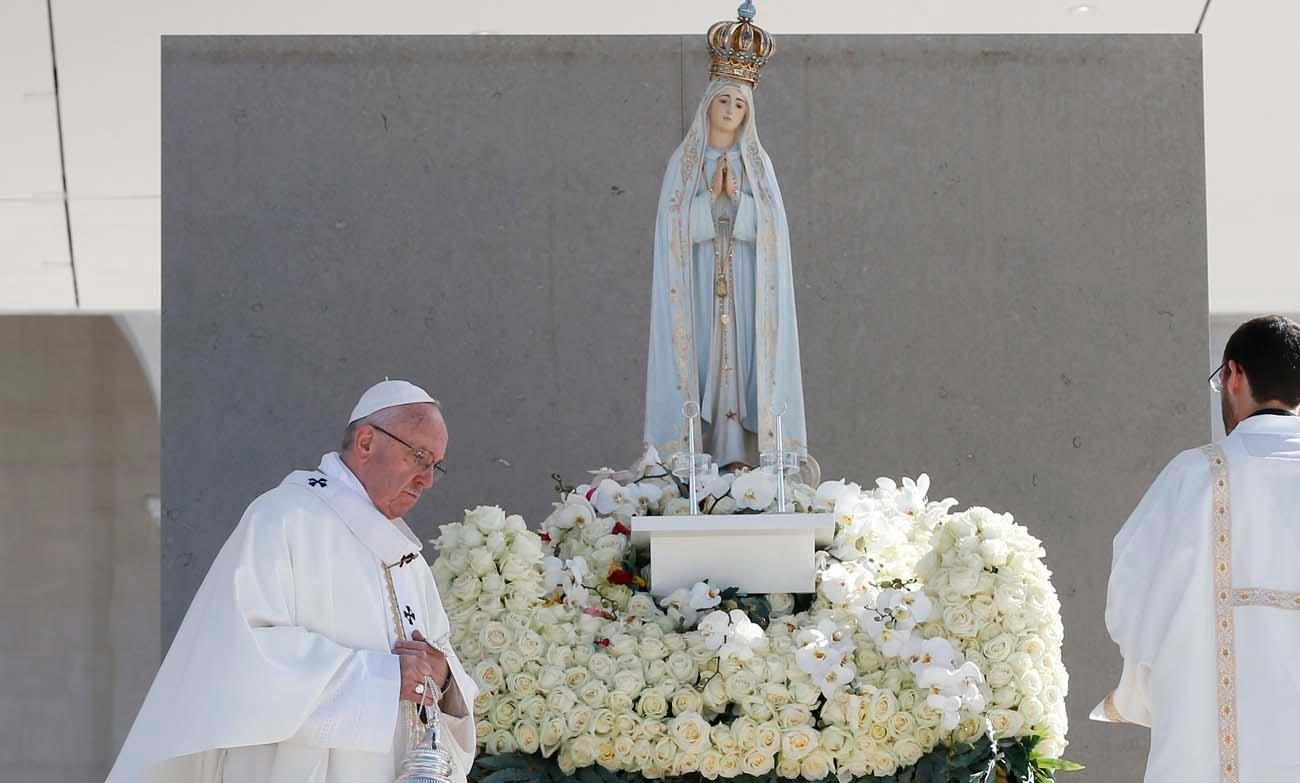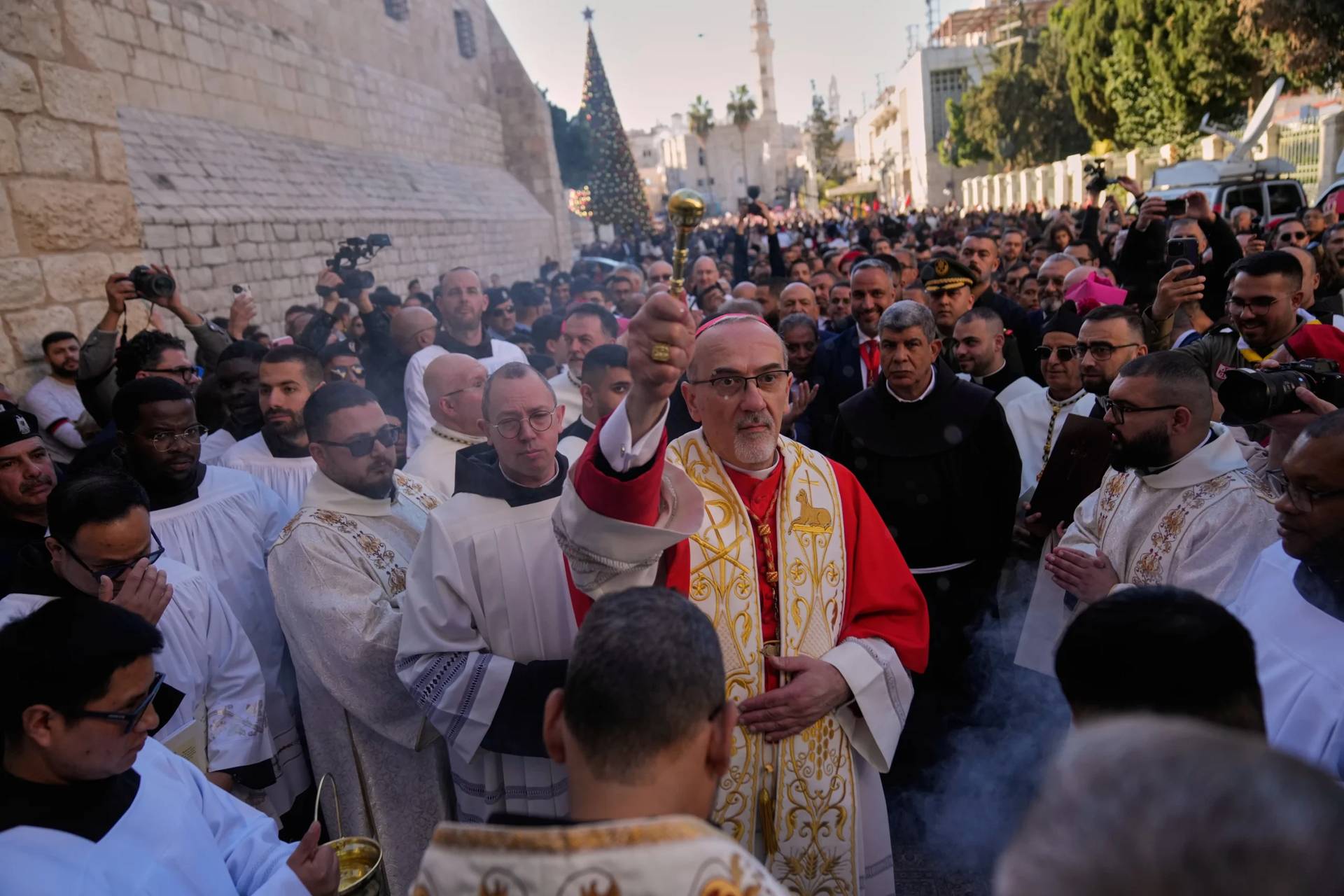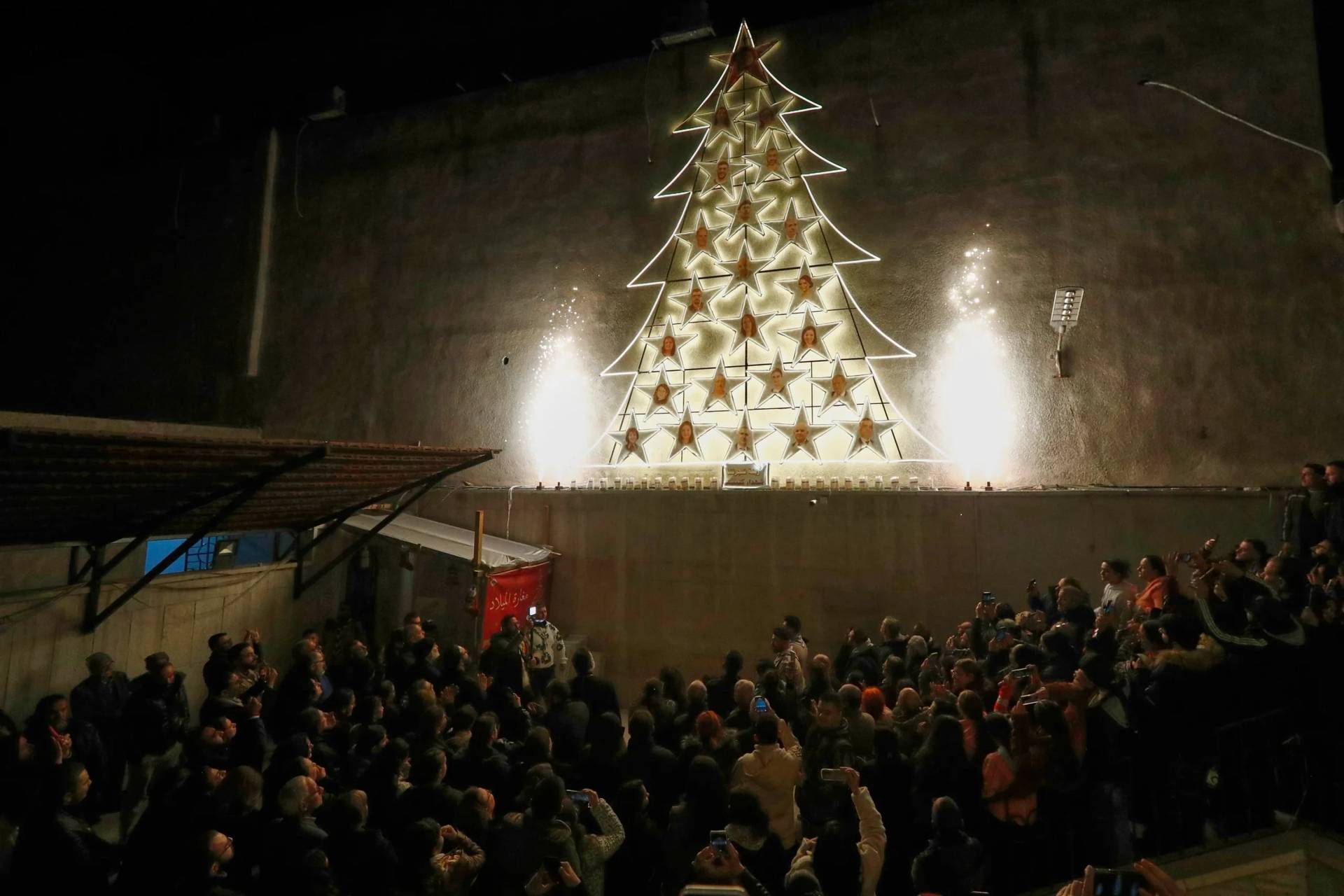ROME – According to one expert in the Catholic Church’s field of Mariology – i.e., all things related to the Blessed Virgin Mary – Pope Francis’s decision to consecrate Russia and Ukraine to the Immaculate Heart of Mary on Friday is a significant gesture for the good of both nations.
Father Alexandre Mello, the secretary of the Vatican’s Dicastery for the Laity, Family, and Life, said the consecration, which will take place March 25 in St. Peter’s Basilica, is an act of surrender in which the pope recognizes both Russians and Ukrainians as children of God, and entrusts them to Mary’s care.
Speaking to Crux, Mello said, “Mary is the mother of all peoples. She is the mother of Russians and Ukrainians,” and therefore, the goal of the consecration is to have a healing effect and to remind Russians and Ukrainians of their shared roots and identities as children of the same God.
“The consecration is a prayer of surrender, of intercession for the good of both peoples and of the whole world. Peace is good for all,” Mello said. “It is not a political act, but a religious one, a plea for God to intervene for the good of all.”
Our Lady of Fatima’s original request for the consecration of Russia to her Immaculate Heart in 1917 “should also be understood in this way,” he said. “With war everyone loses.”
Pope Francis’s decision to hold the consecration, which is reportedly a response to a direct request from Ukraine’s bishops and faithful on the ground, “is in favor of everyone,” Mello said, saying it also carries ecumenical weight in terms of the Catholic Church’s relationship with the Russian Orthodox Church.
“It is certainly a gesture designed to build bridges. Orthodox Christians are just as Marian, or even more Marian, than we Latins,” he said, insisting that Mary “is, in fact, part of the Christian identity of the Russian people and the Ukrainian people.”
The consecration comes after Russia’s Feb. 24 invasion of Ukraine, which sparked a war that continues to claim countless civilian lives and which, so far, has prompted some 3.3 million people to flee the country, and an additional 6.5 million to be internally displaced.
Mello also spoke of the historical context of the consecration, its significance, and addressed debate over whether past consecrations have satisfied Mary’s request.
Please read Crux’s interview with Father Alexandre Mello below:
Crux: In Mariological terms, what does this gesture on the part of the pope mean? How important is this consecration?
Mello: Throughout the history of the church, acts of “consecration” to Mary, currently also called acts of surrender or dedication, performed personally or communally, are not infrequent. Saint Louis Marie Grignion de Montfort preferred to define them as, “consecration to Christ through the hands of Mary,” as a conscious and subjective way of renewing the ‘baptismal consecration.’
On the cross, as his messianic gift, Jesus entrusted the beloved disciple to Mary so that she might become his mother, and, throughout the centuries, the church perceived the mission of Mary as the mother of humanity, as mother of all peoples. By the will of God, even today, Mary – in her glorious condition – continues to carry out her mission as “our mother in the order of grace (Lumen Gentium 60).”
Pope Francis likes to say that “Mary is always present in the midst of the people (Evangelii Gaudium 284).” In fact, the evangelized peoples manage to recognize the singular place that she holds in the mystery of Christ and of the church. They see her as a model of evangelic virtues and express full confidence in her intercession and maternal care.
Ukraine and Russia are evangelized peoples. Mary is there and acts as a mother, model, and intercessor for both Ukrainians and Russians. To ‘consecrate’ them again is to ask Jesus, through the hands of Mary, to sanctify these peoples and give them peace.
Without ‘invalidating’ the consecration done by John Paul II, is this the closest a pope has ever come to fulfilling the request of Our Lady of Fatima?
As is known, on July 13, 1917, the Virgin Mary at Fatima reportedly requested the consecration of Russia to her Immaculate Heart. John Paul II consecrated the world to Mary on several occasions, and Sister Lucia, one of the seers of Fatima, personally confirmed that the act performed by him on March 25, 1984, corresponded to the Virgin’s request.
But the Polish Pope was not the first pontiff to carry out such an act. Before him, Pius XII consecrated the church and the human race to the Immaculate Heart of Mary (radio message Oct. 31, 1942), and, 10 years later, he specifically consecrated Russia to the Immaculate Heart of Mary (Apostolic letter Sacro vergente anno from July 7, 1952). Many bishops, too, have carried out and continue to carry out the act of consecration of their people to Mary in times of difficulty and suffering. The Lebanese episcopate, for example, consecrated Lebanon on March 25, 2017, in Fatima, and at the same shrine 24 countries were consecrated to the Virgin on March 25, 2020, just as Cardinal Krajewski will perform the same act in Fatima on March 25 at the same time as the pope in the Vatican.
Much has been discussed about the ‘exact’ way of fulfilling the request of the Virgin at Fatima, especially about the insistence that the consecration be made by the pope together with all the bishops of the world. Like John Paul II in 1984, Francis has also asked the bishops from all over the world to join him in this act. However, I do not think it is a question here of comparing both acts or sticking to formal details. What counts is the sincere intention to entrust to Mary the care of these peoples, her children, and to ask for her intercession so that peace can be restored. Just as each one of us can renew our dedication to the Virgin every day, every act of consecration can be renewed as many times as one wants, in order to imbue oneself of its deep meaning, which goes far beyond the formalities with which it is performed.
Some have said this is a unilateral act directed at Russia. Is this true? If this is not just an act toward Russia, why did Our Lady of Fatima ask for the consecration of Russia specifically?
Mary is the mother of all peoples. She is the mother of Russians and Ukrainians. The consecration is a prayer of surrender, of intercession for the good of both peoples and of the whole world. Peace is good for all. It is not a political act, but a religious one, a plea for God to intervene for the good of all. The request of Our Lady of Fatima in 1917 should also be understood in this way.
With war everyone loses. In the recent video call with Kirill, Orthodox Patriarch of Moscow and all Russia, Pope Francis expressed his concern because “those who pay the bill for the war are the people. It is the Russian soldiers sent to die bombing and the people who are being bombed and dying.” Francis’s initiative is in favor of everyone. This is why the initiative, which seems to have come from the Ukrainian bishops themselves, from the beginning included the consecration of both peoples and the whole world to the Virgin.
What impact could this have on the current conflict, also in an ecumenical sense? Is it something that can build bridges, since the Russian Orthodox also venerate the Virgin Mary, or could it be seen as hostile and put ecumenical relations between Catholics and the Russian Orthodox behind?
It is certainly a gesture designed to build bridges. Orthodox Christians are just as Marian, or even more Marian, than we Latins. In Evangelii Gaudium, Pope Francis recalls that Mary “shares the history of each people which has received the Gospel and she becomes a part of their historic identity” (EG 286). She is, in fact, part of the Christian identity of the Russian people and the Ukrainian people.
In the aforementioned conversation between Francis and Kirill, it was reaffirmed that both are “pastors of the same holy people who believe in God, in the Holy Trinity, in the Holy Mother of God: That is why we must unite in the effort to help peace, to help those who suffer, to seek paths to peace, to stop the fire.”
Therefore, Catholics and Orthodox can consider the act of March 25 as a gesture of trust in the maternal intercession of Mary before Christ so that he may give his peace to those who suffer at this time. As ‘Mother of All,’ Mary is able to unite peoples. As a text that Pope Francis helped write says, the Concluding Document of the V General Conference of CELAM in Aparecida (2007): “As in the human family, the Church-family is generated around a mother, who confers ‘soul’ and tenderness to family life. Mary, Mother of the Church, in addition to a model and paradigm of humanity, is the architect of unity.”
Follow Elise Ann Allen on Twitter: @eliseannallen














